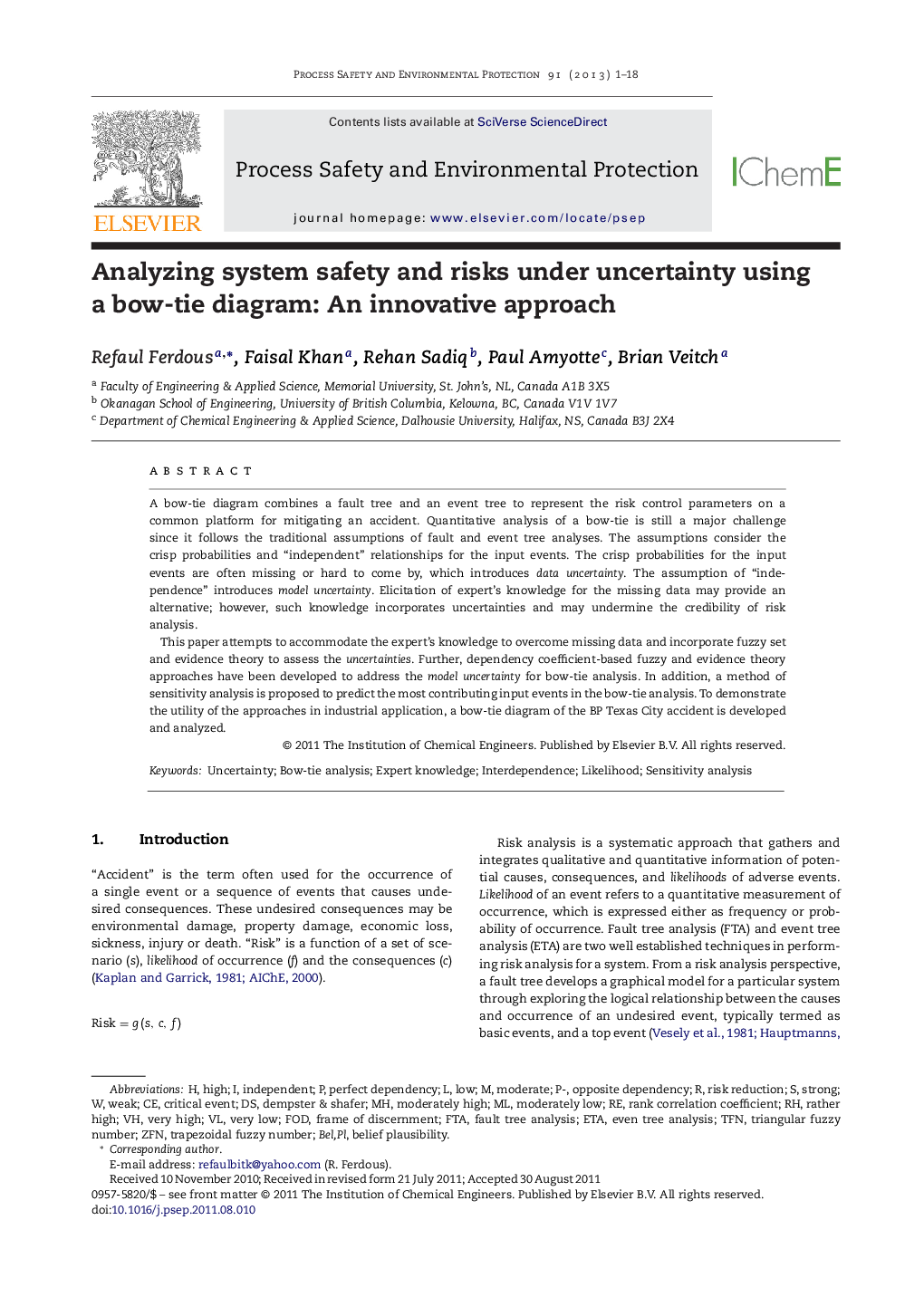| Article ID | Journal | Published Year | Pages | File Type |
|---|---|---|---|---|
| 588230 | Process Safety and Environmental Protection | 2013 | 18 Pages |
A bow-tie diagram combines a fault tree and an event tree to represent the risk control parameters on a common platform for mitigating an accident. Quantitative analysis of a bow-tie is still a major challenge since it follows the traditional assumptions of fault and event tree analyses. The assumptions consider the crisp probabilities and “independent” relationships for the input events. The crisp probabilities for the input events are often missing or hard to come by, which introduces data uncertainty. The assumption of “independence” introduces model uncertainty. Elicitation of expert's knowledge for the missing data may provide an alternative; however, such knowledge incorporates uncertainties and may undermine the credibility of risk analysis.This paper attempts to accommodate the expert's knowledge to overcome missing data and incorporate fuzzy set and evidence theory to assess the uncertainties. Further, dependency coefficient-based fuzzy and evidence theory approaches have been developed to address the model uncertainty for bow-tie analysis. In addition, a method of sensitivity analysis is proposed to predict the most contributing input events in the bow-tie analysis. To demonstrate the utility of the approaches in industrial application, a bow-tie diagram of the BP Texas City accident is developed and analyzed.
► The developed approaches able to accommodate experts’ knowledge and facilitate the risk analysis process under data and model uncertainty. ► The approaches are able to address the subjective uncertainty and the uncertainty due to ignorance and inconsistency associated in the expert's knowledge. ► The dependency coefficient in the approaches can explore the different kinds of interdependence among the input events and addresses the model uncertainty for the bow-tie analysis. ► The sensitivity analysis for bow-tie analysis can identify the most contributing input events and provide an evaluation to mitigate the percentage of risk reduction for the industrial system.
